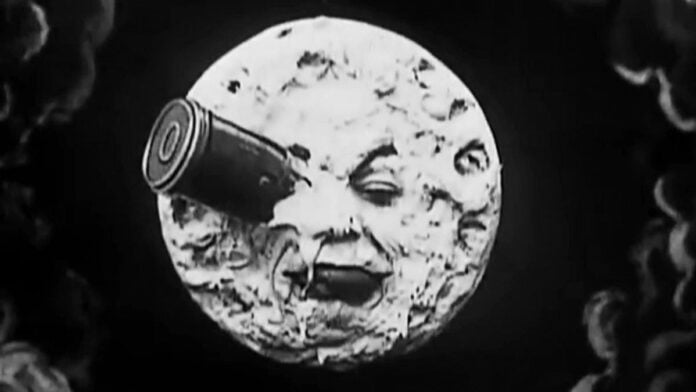Various things have changed since the time humans have come to exist on Earth. At some point in our shared past, we figured out a way of interacting with the world around us, a way to put forth some of our complex thoughts into a tangible form. We learned and invented language, through which we could understand what people around us experienced and in turn respond with our own personal experiences. This was an important point in history as we began stressing our vocal cords to make certain sounds which had a distinct meaning attached to them. Now, cut to the early 20th century. With advancements in technology and industry and new ways of expressing things through art movements and the photographic image, there arose a new language, the language of the film, which changed the way we looked at and interacted with the world. But how can film be a language?
If we look at the novel, it induces the nuances of the written word and uses them in myriad ways to bring forth all the ideas that it wants to incorporate within. Metaphor, similes, personification, and all the other literary devices are used to permeate the hearts and minds of its readers and embellish its themes. Similarly, music uses the variations of notes, tonality, and rhythm to stimulate our auditory senses and make us feel what it wants to. Different methodologies have been developed over the years that are used to serve in front of us a deliciously soothing experience. Cinema, then, is also a means of communication, just like a piece of music or written word. It is an amalgamation of all art forms—the written word, music, elements of painting, and theatrical devices. Cinema employs all of them to convey feelings or chains of thoughts that are widely accessible and easy to relate to. In that way, cinema is closer to photography and uses visual cues to present ideas and notions of the world around us.
When we are watching a film, apart from the conscious engagement that we are having with the characters played by our favorite actors, a lot of things are happening on the screen that are prompting us towards a certain emotion. All these factors are unique to cinema and, over the years, have been developed by films made by makers around the world. When Greg Toland, the cinematographer (of “Citizen Kane”), and director of Orson Welles, decided to have deep focus in its shots so that characters farther away from the camera could also be seen, they were creating new ways of seeing things by taking the technology in hand and using it differently. They created a new language which has been used ever since by other filmmakers. Or, when Hitchcock shot and edited the now famous shower sequence from his masterpiece “Psycho,” he was looking at ways to show the rising terror and tension that would elevate the already tense sequence of murder. He did that through his razor-sharp rapid cuts, which gave an overall sense of claustrophobia and continue to chill viewers even today. That, again, is an example of using the visual language and editing of shots to blanket a specific feeling over the audience.
There are such examples in all the films that we watch. Filmmaking is an art where a carefully crafted bunch of scenarios are created to leave a lasting impression on all of us. So much so that we are left enchanted for a long time after coming out of the theater. All of it is done to create an experience, a world where we can interact with its characters and revel in all the human emotions of anger, hatred, hope, and love. If you think of the poem, it is not just a random way of expression. A poem is created by saying things a certain way so as to accentuate the gravity and depth of each word said. It is a rhythmic contemplation of words merged together to sound good and create meaning.
Similarly, just a bunch of random visuals combined together, will not be called a film in the truest sense of the word, unless it employs consciously certain ways that hold your interest, that take your breath away at one instance, and give you enough room in the next. If it excites you, and fills you up with emotional fodder, it has managed to communicate what it intended to through its language. Any form of art is like making a dish. All the ingredients have to come together. All flavors must flourish for the final outcome to appear delicious on the platter it is served upon. And so, film is a language. A language which we interact with and which communicates with us a wide variety of things. Film is a language in the poetic sense rather than in the literal sense. A film in all its glory and final form becomes a poem.
The reason why the feeling of creation is endowed upon artists is not just because they create something of their own out of the intangible but also because they see the world differently and, hence, are involved in making new realizations about the old order. A writer picks up the pen, a painter brushes off his emotions, a musician sharpens his notes, and a filmmaker peeks through the lens at the world and sees where it’s not, a rainbow spreading across a clean blue sky. She creates it especially for the world to actualize, to make everyone experience what she has felt. The language of the film is thus created!

